Thanks to Facebook, I met Katheryne Gatehouse, who is passionate about fine art and nature. She first guest blog posted on HBT about bees. Here she tells us about a favorite painter…
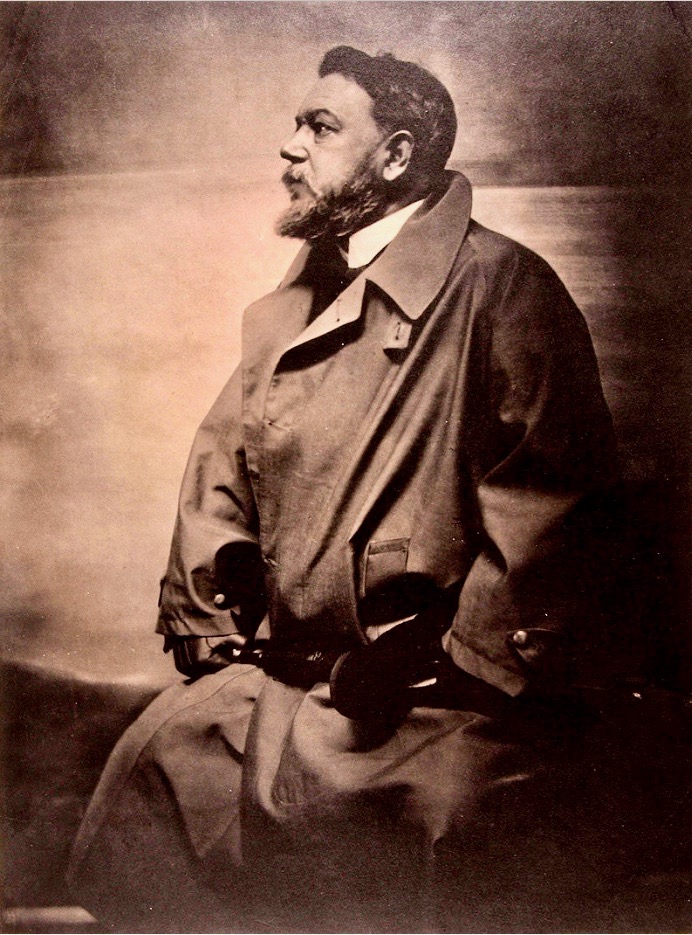
Guest Blog Post: Master of Light, Joaquín Sorolla by Katheryne Gatehouse…
When you think of the greatest Impressionist painters, you might think that because the movement was founded in Paris, all the best were French, right? If that’s the case, you’ll have missed one of the forgotten giants, Spain’s Joaquín Sorolla y Bastida (1863–1923). It was Claude Monet who named him, “The Master of Light.” Growing up in the harsh bright sunlight of Valencia, he mastered the play of light on buildings, on gardens, on flesh, and on the sea. No other artist depicts shadows and dappled sunlight better!
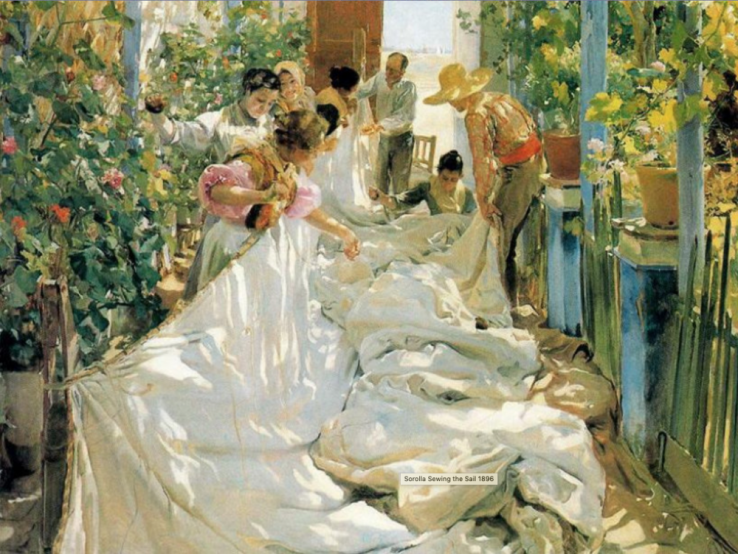
I first came across Sorolla as part of a large exhibition on impressionist gardens. Many of the paintings were charming or beautiful, yet entering the gallery from a cool misty grey London day outdoors, and then standing in front of a luminous Sorolla painting, I felt as if I was on holiday. Some weeks later, I visited Giverny, where I was delighted to find an exhibition of his works. It was love at first sight. I have been besotted with him ever since!

As a young man, he studied in Paris and won a 4-year term to study painting in Rome. He returned to Valencia in 1888 to marry Clotilde Garcia del Castillo, whom he met in 1879 while working in her father’s studio. She is the subject of many of his portraits, including one in the style of Diego Velázquez’s Rokeby Venus lying naked on silk sheets and is as sensual as his painting of Clotilde lying next to their newborn daughter is tender. All of the Clotilde portraits clearly show his undying love and admiration for her. Later still, he painted her in a traditional black Spanish dress, looking every inch the supermodel with an impossibly tiny waist, though a photograph of this sitting shows that it was indeed a true likeness. The couple went on to have 3 children Joaquin, Mary, & Elena who feature in many of his works, including “My family” also in the style of Velasquez’s Las Meninas. Despite his talent and recognition above all he was a devoted husband and family man.

Although he was based in Madrid, each year he returned to Valencia. There he painted glorious beach scenes of children playing in the water and running along the shoreline, as well as proud working class people that included fishermen and women.
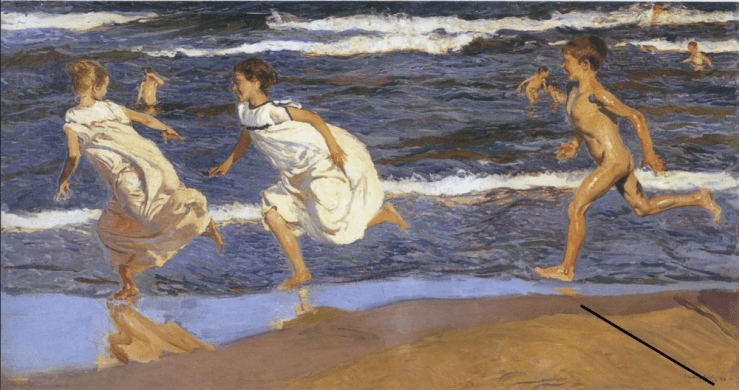
An exceptional portraitist, his repertoire includes Spain’s King Alphonso XIII, artist/designer Louis Comfort Tiffany, and U.S. 27th President William Howard Taft. Social themes were important to Sorolla. “Another Marguerite” (1892), which depicts a woman who was arrested for murdering her young child, was awarded the gold medal at the National Exhibition in Madrid. “Sad Inheritance” (1899) portrays children with polio bathing in the sea while supervised by a monk. The title refers to how the youngsters were innocent victims of hereditary syphilis.
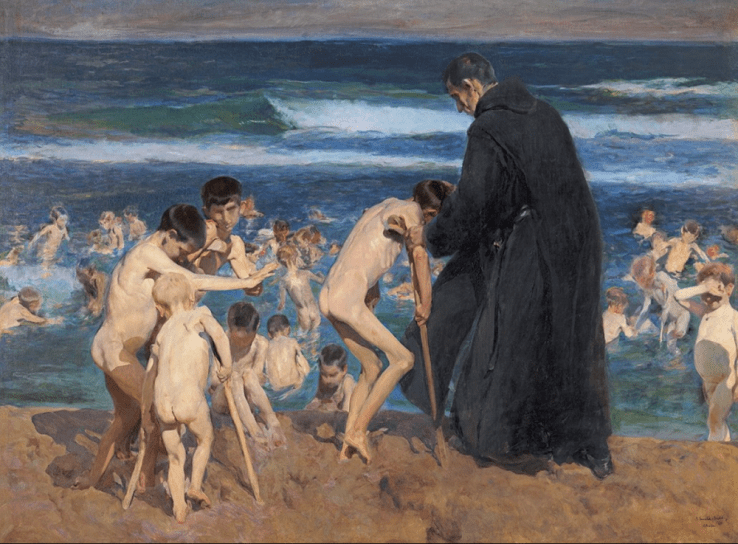
Despite great acclaim elsewhere in Europe, a 1908 London exhibition was not a great success. However, it led to important introductions. A wealthy American friend of the arts, Archer Milton Huntington, made Sorolla a member of the Hispanic Society of America. In addition, he invited Sorolla to exhibit, with great success (195 of 365 paintings being sold) and subsequently commissioned Sorolla for a series of monumental paintings to be installed in their building in Manhattan. The murals total 227’ wide by about 14′ high. “Visions of Spain” depicts regions of the Iberian peninsula. All but one was painted en plein air with life-sized figures, some in traditional regional dress.

In 1920, Sorolla was painting a portrait of Mrs. Ramon Perez de Ayala when he suffered a major stroke that left him paralyzed. He died three years later and is buried in the Cementeri de Valencia. The last house he and Clotilde shared in Madrid is now the Museo Sorolla. It is a must-see for all fans of impressionist art. If you are visiting London, there is currently an excellent collection of sixty Sorolla paintings at The National Gallery until 7th July 2019.
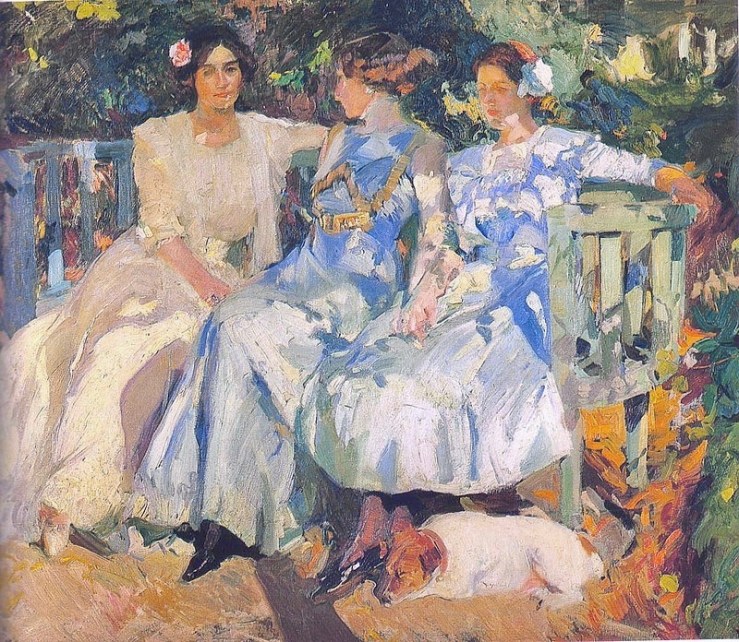
What do you think of impressionism?


Hello Daal,
Hope you are doing well.It’s good to be back in WordPress and to read this phenomenal post by my dear friend.One thing that I always adored about your writing..it always is a stimulant to my thoughts,like today you gave me an intriguing life to discover..I must
now dive into the sun-colored and variegated painting of Sorolla’s masterpieces,All Thanks to you.
LikeLiked by 1 person
you are always very kind, Neha ❤
LikeLike
I came across him a few years ago. Your post has prompted me to visit The National Gallery in London to see the exhibition.
Thanks for the background – fascinating.
JP
LikeLiked by 1 person
have fun 🙂
LikeLike
Such a unique, delicate style, I can see why you’re besotted with his work, Katheryne! xx
LikeLiked by 1 person
moreover, besotted is such a great word that we don’t use enough in US 🙂
LikeLiked by 1 person
Not used enough in the UK these days either, it is a great word, isn’t it? 🙂
LikeLiked by 1 person
but — sounds like the sort of bonmot you folks would bandy about all the time 🙂
LikeLiked by 1 person
Bonmot and bandy DEFINITELY aren’t used here (though they probably should be, too!)
LikeLiked by 1 person
lolol
LikeLiked by 1 person
My favorite period of art so far!
LikeLiked by 1 person